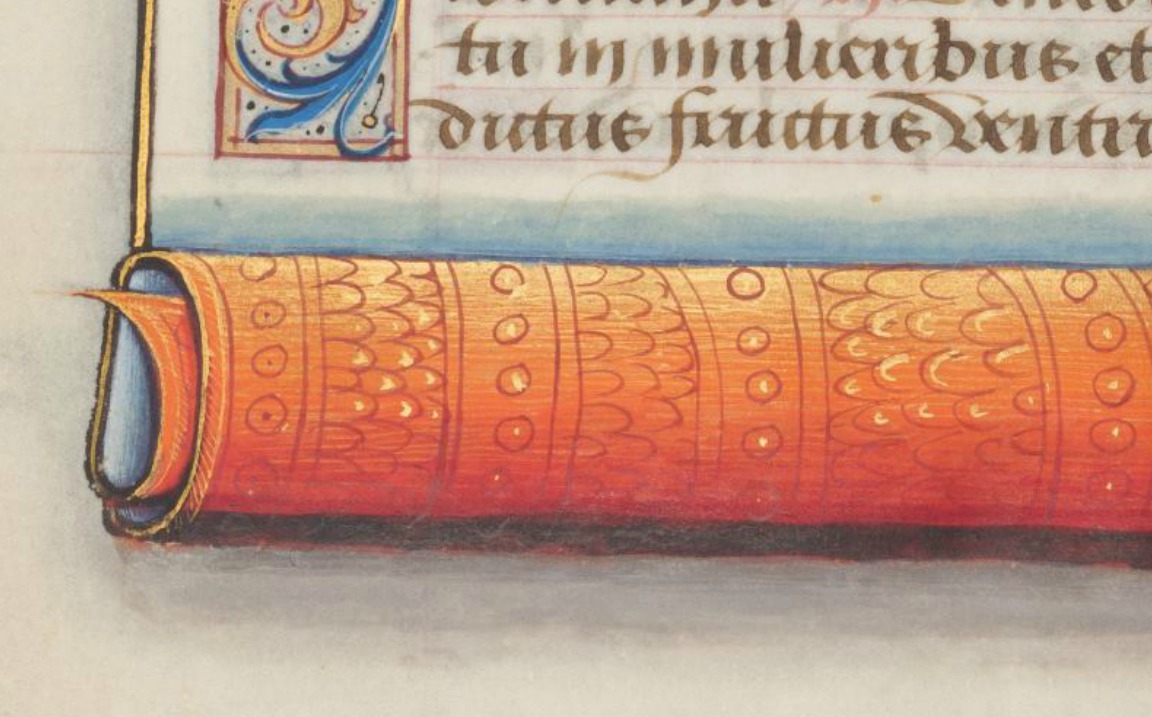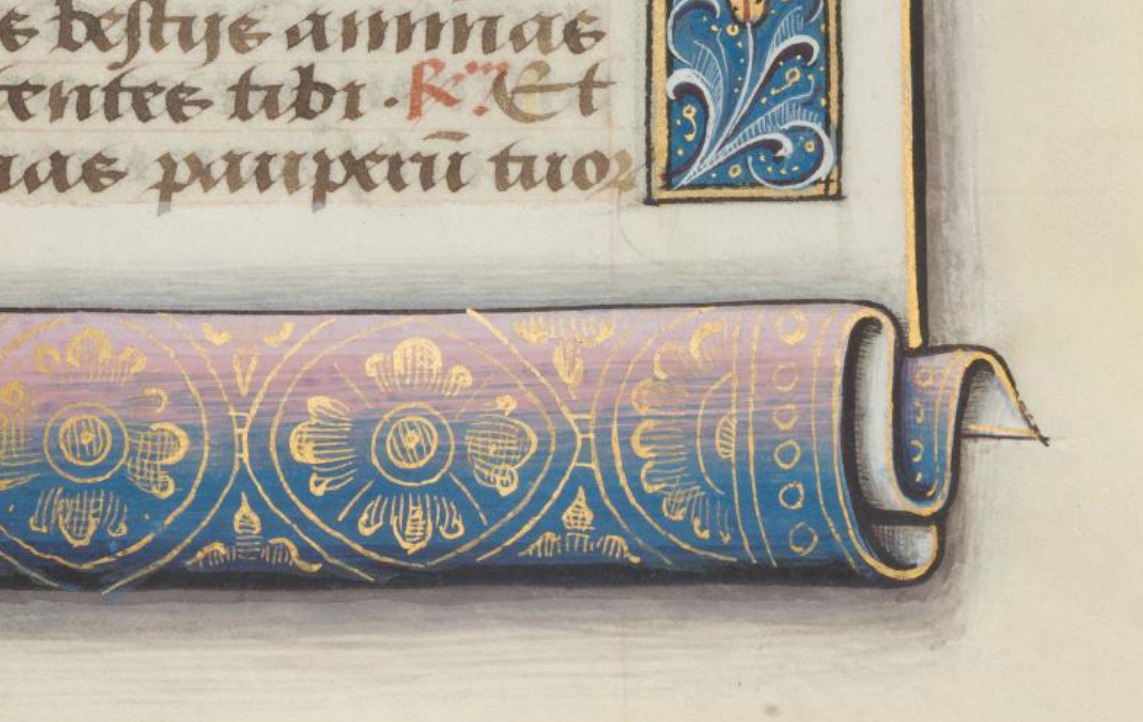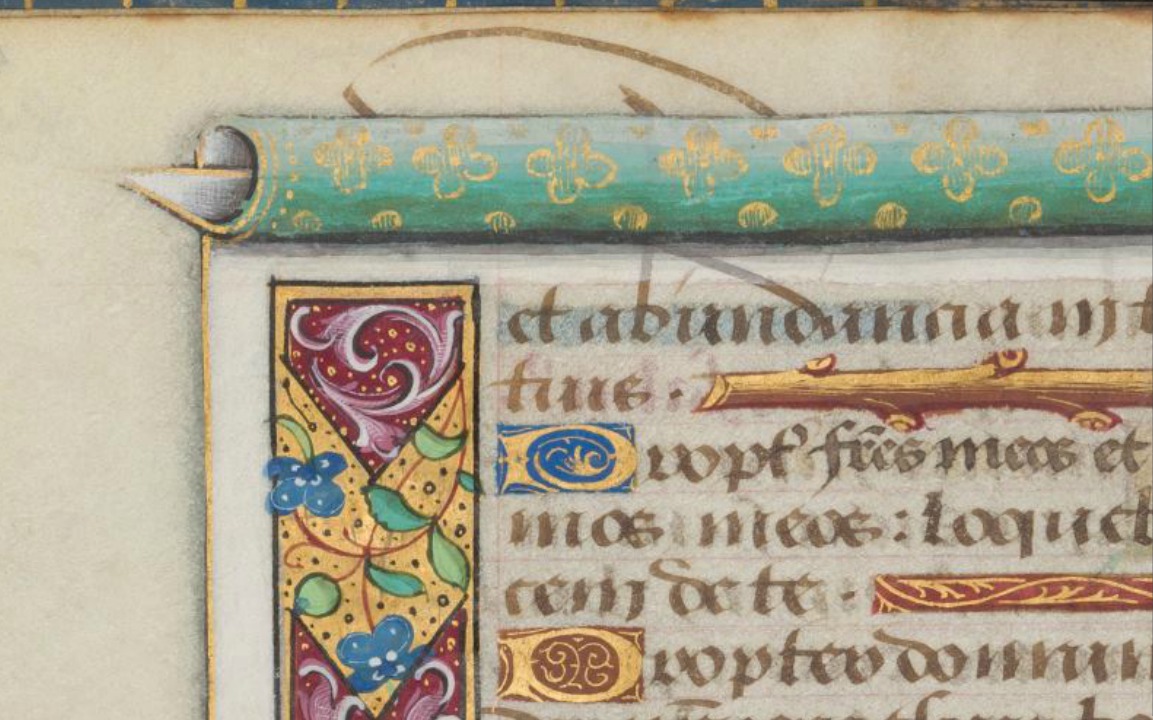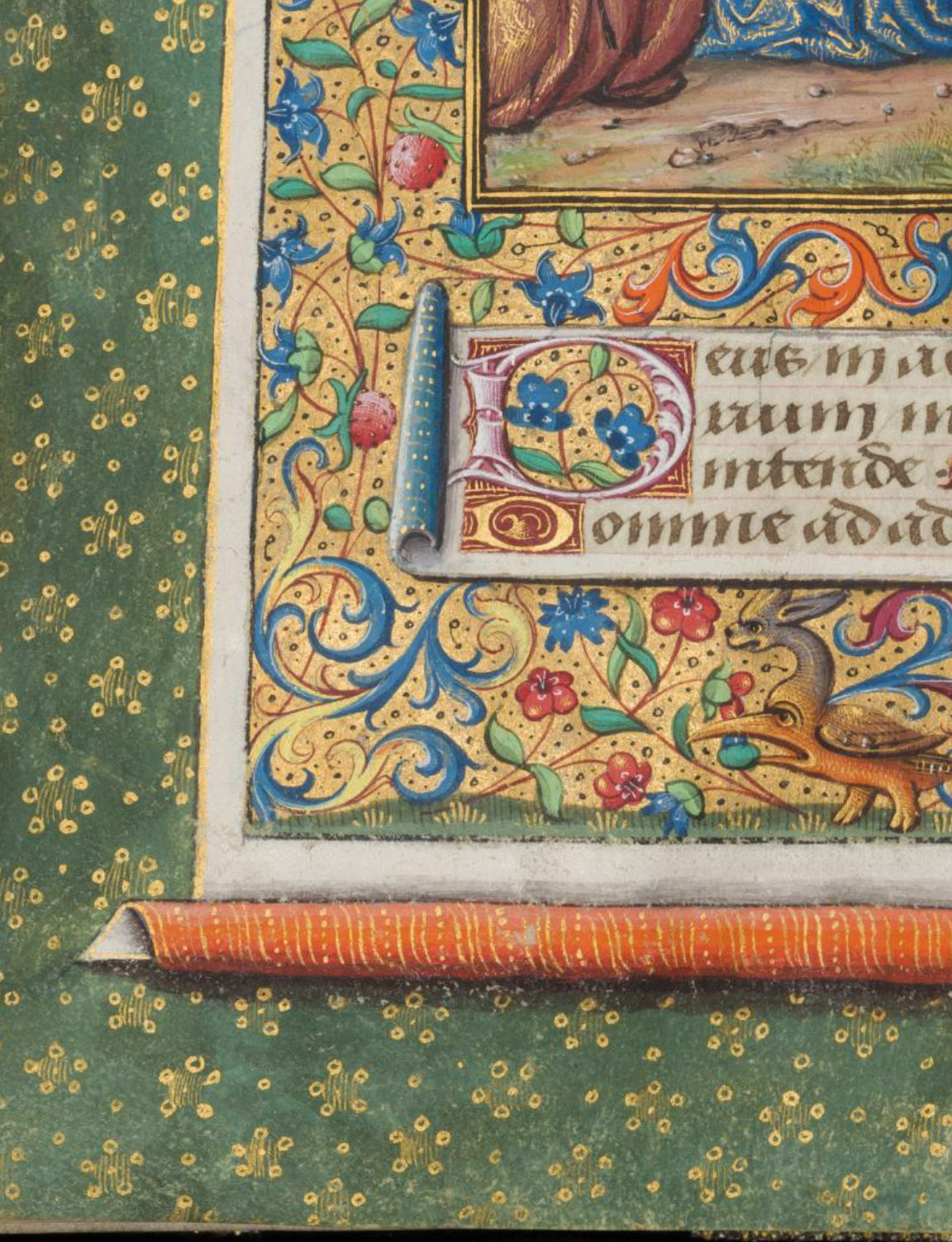Trompe-l’oeil scroll borders
This Book of Hours from the University Library in Liège has a unique stylistic feature. In addition to rich marginal decorations and colorful initials, each page includes a trompe-l’oeil border designed to make it look like the text is written on a scroll of parchment with a decorative pattern on the back.

Livre d’heures
(Manuscrit Wittert 16)
Manuscrit réalisé en France à la fin du XVe siècle.
172 x 111 millimètres.
Université de Liège, Bibliothèque. Ms. W.16, fols. 22v-23r.
There are a number of different color schemes and patterns for the scrolls as well as a variety of shapes for each scroll’s curls. Fol. 24v.

The artist has created a silky sheen for some of the patterns by using a gradation from one color to another, in this case, from pink to blue. Fol. 124r.

In all cases, the scrolls have a gently-graded shadow to create the 3-D effect. Fol. 70v.

On several pages, extended ascenders get lost behind the scroll effects and re-emerge behind them as in the case of this flourish on top of the d in abundancia. Fol. 45v.

Some pages are distinguished by an additional pattern that fills the margins behind the scroll. The shadow of the scroll is cast on top of this background to preserve the trompe-l’oeil effect. Fol. 38v.

In a few instances, shorter text blocks are framed in another horizontal scroll, presumably sitting on top of the full-page scroll. Fol. 46v.

Here, the full page background simulates a porphyry slab. A blue scroll fills the page and a smaller orange scroll sits on top of it. Fol. 39r.

The repeated patterns used for the scrolls and the background appear to be random selections with the noted exception of the pages introducing the Office of the Dead. Here, the background provides an obvious visual connection with the text. Fol. 101v.

In sum, we find a unique Book of Hours that playfully emulates a scroll without sacrificing the advantages of random access provided by the codex form factor.
Perhaps this effort that bears traces of material nostalgia should not seem foreign to us. After all, when we consult digital images of this manuscript on the web site of the Bibliothèque de l’Université de Liège, we have the option of viewing either a continuous stream of thumbnails via scroll or watching the pages turn with an audio and visual simulated 3-D effect.
Leave a Reply